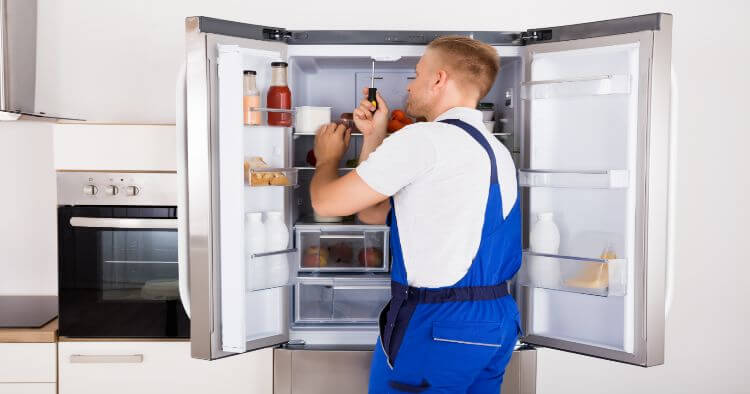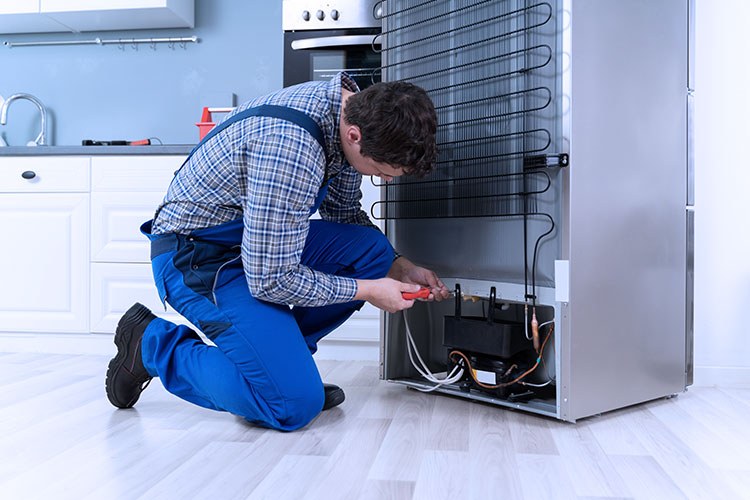A refrigerator that stops cooling can be a frustrating and costly problem—especially if it leads to spoiled food and beverages. Before calling a technician, there are several troubleshooting steps you can take to identify and possibly fix the issue yourself. This guide covers the most common reasons a refrigerator might stop cooling and what you can do to resolve the problem.
1. Check the Power Supply
Start with the basics. Make sure your refrigerator is properly plugged in and receiving power.
- Inspect the power cord for damage or disconnection.
- Ensure the outlet is working by plugging in another device.
- Check your circuit breaker to ensure it hasn’t tripped.
If your fridge has lights or sounds, it’s likely receiving power.
2. Inspect the Thermostat Settings

Sometimes the thermostat gets accidentally turned down—or even off.
- Locate the thermostat inside your fridge and make sure it’s set to the recommended level (usually between 35°F and 38°F or 1.7°C to 3.3°C).
- If it’s digital, make sure the display is functioning and hasn’t reset due to a power surge.
3. Clean the Condenser Coils
Dirty condenser coils can reduce your refrigerator’s cooling efficiency.
- Coils are usually located on the back or underneath the appliance.
- Unplug the fridge before cleaning.
- Use a coil brush or vacuum to remove dust and debris.
Aim to clean the coils every 6–12 months to keep your fridge running smoothly.
4. Check the Door Seals
Poor door seals allow cold air to escape, making the refrigerator work harder.
- Inspect the rubber gaskets around the doors.
- Look for cracks, tears, or looseness.
- Close the door on a sheet of paper—if you can pull it out easily, the seal might be compromised.
Replace damaged gaskets to restore proper sealing.
5. Listen for the Evaporator and Condenser Fans
Your refrigerator relies on internal fans to circulate air.
- When the fridge is running, listen for the sound of small fans.
- No noise might mean a fan has failed.
If you’re comfortable doing so, remove the panel at the back of the freezer section to access the evaporator fan. If the fan is not spinning or makes odd noises, it may need replacement.
6. Check for Frost Build-Up in the Freezer
Excessive frost in the freezer compartment may indicate a defrost system failure.
- Look for frost covering the back panel inside the freezer.
- If frost is present, your defrost heater, defrost thermostat, or defrost timer may be faulty.
You can try a manual defrost by unplugging the fridge and letting it sit for 24–48 hours. If it cools properly after that, you’ll know the defrost system needs further inspection or repair.
7. Examine the Compressor
The compressor is the heart of the refrigerator’s cooling system.
- You should hear a low humming sound if it’s running.
- If it’s completely silent or clicking repeatedly, it may have failed.
A faulty compressor is usually not a DIY fix and requires professional repair or replacement.
8. Check for Error Codes (on Modern Models)
Newer refrigerators may display error codes that can guide you to the source of the issue.
- Refer to your owner’s manual or the manufacturer’s website for code definitions.
- Codes may indicate problems with sensors, fans, or temperature regulation systems.
When to Call a Professional
If you’ve tried the above steps and the refrigerator is still not cooling, it’s time to call a certified appliance repair technician. Especially for issues involving the compressor, sealed system, or electronics, professional diagnosis and repair are recommended.

